Monoprice Monolith M1000ANC Bluetooth Headphones Review
A while ago, Monoprice released their Monolith M1000ANC Bluetooth headphones. We finally got a pair in for review. These $130 on/over (we’ll get to that) ear headphones have a lot of features for not a ton of money. But are they worth it? Let’s take a closer look!
Specs
| Driver Size | 40mm |
| Frequency Response | 20Hz ~ 20kHz |
| Bluetooth Version | 5 |
| Audio Codec | SBC |
| Noise Reduction (ANC HI) | 35dB |
| Noise Reduction (ANC LOW) | 20dB |
| Battery Type | Lithium‑ion |
| Charging Connector | USB Type‑C |
| Playback Time (ANC off) | About 60 hours |
| Playback Time (ANC on) | About 40 hours |
| Playback Time with 5 Minute Charge | About 2 hours |
| Charging Time | About 2.5 hours |
| Weight | 9.3 oz. (263g) |
Monoprice Monolith M1000ANC Bluetooth Headphones Fit and Finish
The Monoprice Monolith M1000ANC Bluetooth headphones feature an on- or over-ear, collapsable design. I saw on/over as it really depends on the size of your ears. I have fairly small ears and they fit me as snug over-ear headphones. For most people, I would expect these to sit on-ear. All the controls are on the right earcup (there are more than you might think) and there is a 3.5mm port on the left cup for hardwiring the M1000ANC headphones if you run out of charge. Though, with a 40-hour estimated battery life with ANC on (and 60 with it off), running out of charge shouldn’t be a problem.
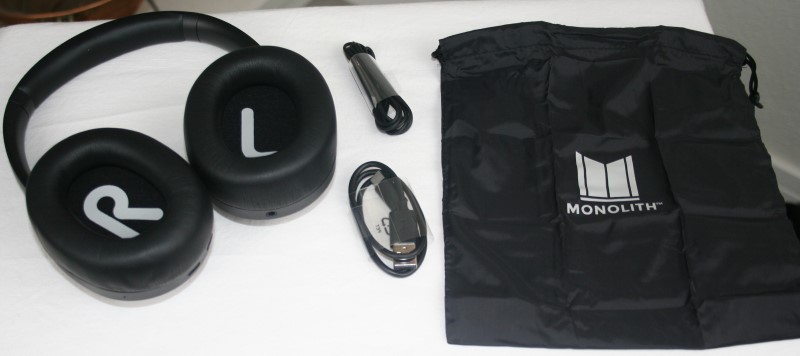
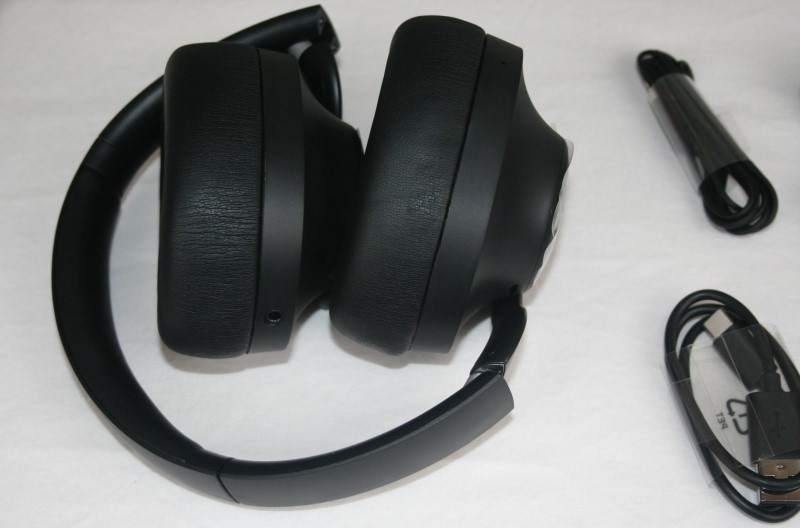
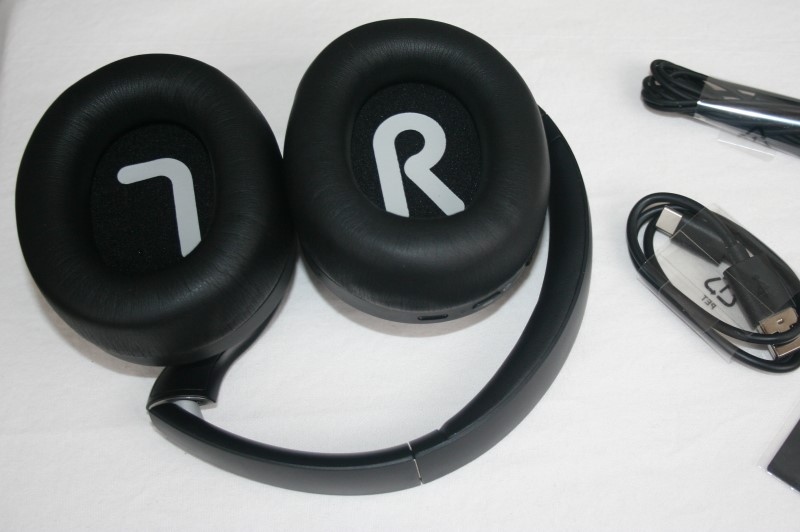
The collapsable design is…very collapsable. When you pick up the Monoprice M1000ANC Monolith Bluetooth headphones, they feel heavy for their size. But the earcups sort of flop around a little too freely. Most collapsable headphones will configure themselves into a specific, compact orientation. Not the M1000ANCs. There didn’t seem to be a preferred compact shape.
I love the solution for labeling the left and right earpads. While this is not the first time I’ve seen it, having the pads labeled on the inside is one of my favorite solutions. It is easy to read for the user and completely invisible when the headphones are in use.
If I have one complaint, it is that the headband is a little small. It is padded and I didn’t find it particularly uncomfortable after I had it properly adjusted. If you are like me, you put on your headphones and pull down on the cups to expand the band. That tended to hurt a little. If you are someone that listens to your headphone while lying down, any pressure on the band is probably going to be uncomfortable.
Bluetooth and ANC
The Monoprice Monolith M1000ANC Bluetooth headphones have all the bells and whistles you’d expect. They have Bluetooth version 5 but are limited to the SBC codec. While SBC is the most universal, it also has the most limited bandwidth.
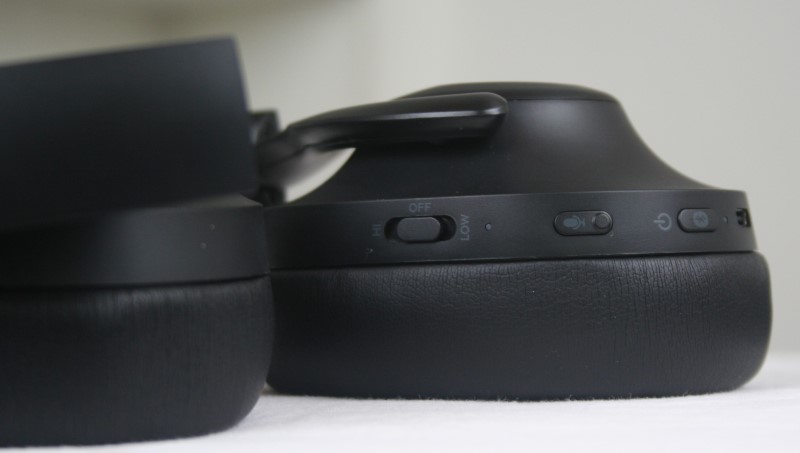
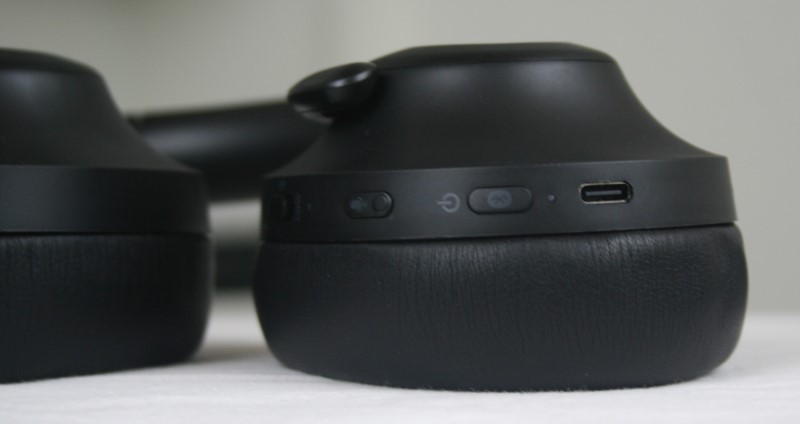
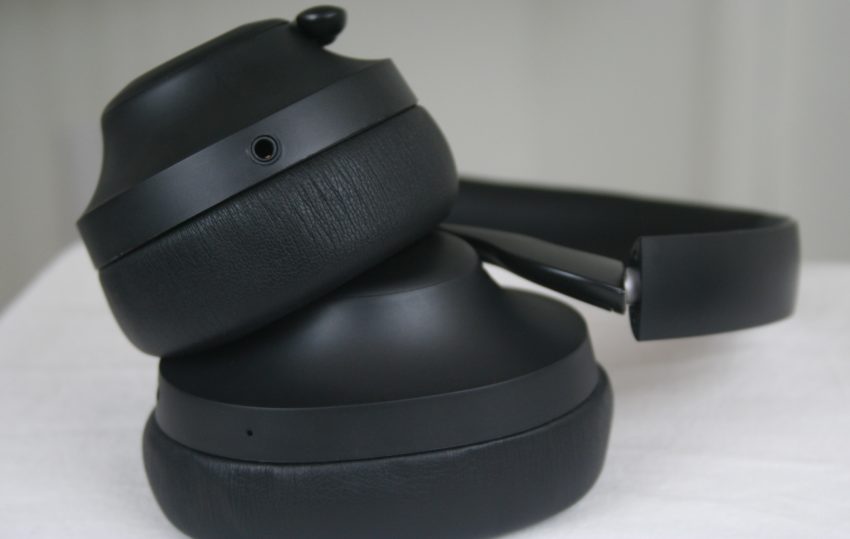
ANC (Active Noise Canceling) is on board with a physical switch to select low, high, or off. In use, the ANC switch is super convenient. If you are someone that wants ANC on or off all the time, you just leave the switch in the desired location. If you are someone that likes to change from ANC on/off frequently, the switch not only lets you do that, but you always know what mode you are in. I’ve used a ton of headphones that use capacitance controls to switch them in and out of ANC mode. This physical switch is FAR superior. There was a clear difference between high, low, and ANC off.
Connecting to my phone or other device was fairly easy. When you power on the Monoprice Monolith M1000ANC Bluetooth headphones a voice will tell you that they are in pairing mode. Connecting was as easy as selecting them (they are labeled MP43453 for some reason) from the menu. I powered off the headphones to test reconnection. Most of the time, I had to go back to my phone to select them again. Sometimes they would automatically reconnect, but more often I would have to do it manually. I disconnected them from my phone and tried with my desktop. I had the same issues so I don’t think it was my phone.
Dirac Virtuo
One thing that interested us about the Monoprice Monolith M1000ANC Bluetooth headphones was the inclusion of Dirac Virtuo. When we first looked at the manual and pictures, there seemed to be a Dirac button but there was no mention of how it worked. Now that we’ve had some time with them we can report that the Dirac button does…something.
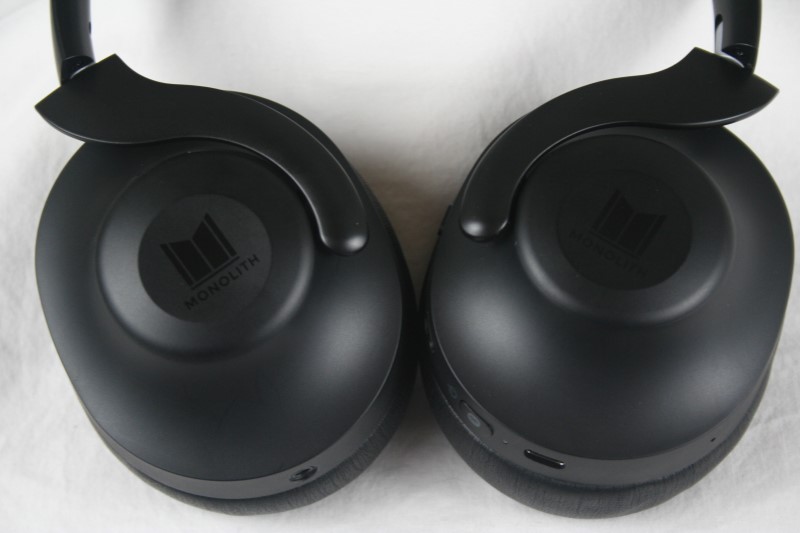
The problem is that there is no indication of whether you are in Dirac mode or not. When you power on the headphones, you are definitely in the same mode (I’m going to call this Dirac Off). When you press the button, the mode changes (Dirac On presumably). A second press puts you back into the Dirac Off mode. There is no light or auditory indication of what mode you are in.
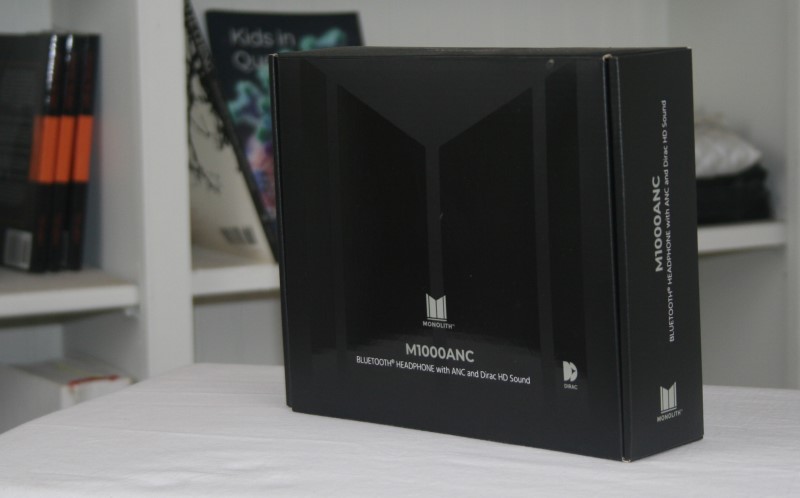
The Dirac Off mode sounds, at base, louder. But as we all know, louder isn’t always better. When I compared the Dirac Off to Dirac On modes on a full 20Hz to 20kHz sweep, the On mode (the quieter one) sounded more linear. With actual content that was well recorded, both sounded pretty good with the Off mode having extended lows and highs. With poorly recorded material, any high-end noise was unbearable in the Off mode. I tended to keep the Dirac in the On position. This meant I had to remember to hit that button every time I powered on the headphones.
Touch Controls
Unlike many on-ear headphones, the Monoprice M1000ANC headphones have a capacitance touch control on the right earpad. This allows you to control things like Play/Pause/Skip as well as volume and transparency mode. It is interesting that Monoprice decided on a mix of control types (physical and capacitance). Usually, we see one or the other. As I’ve said, I really liked the ANC switch. The capacitance controls are as follows.
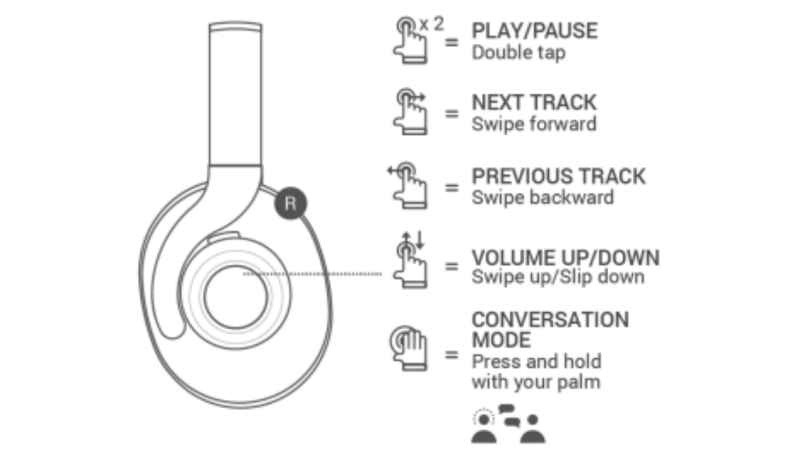
Generally speaking, I found the capacitance controls responsive and accurate. The control area on the Monoprice Monolith M1000ANC Bluetooth headphones is large and forgiving. The swiping worked well and limiting the tap controls to double-tap only made remembering what to do easy.
Lastly, the Monoprice Monolith M1000ANC Bluetooth headphones have a transparency mode. This is common on in-ear headphones, but less so on on-ear. Transparency mode allows outside noises in for when you want to listen to your tunes but also know what is going on around you. To activate, you place your palm over the right earcup touch control area. It looks silly when you do it, but it works well.
Sound Quality
When I review headphones, I want to know two things, how they sound during a call and how they sound with content. I made and accepted a number of phone calls during my testing period. Fairly universally the Monoprice Monolith M1000ANC Bluetooth headphones received high marks. While some people thought I might be on a speakerphone, most reported that they thought I sounded like I wasn’t. As headphones go, that’s excellent. From my side, everyone sounded great.
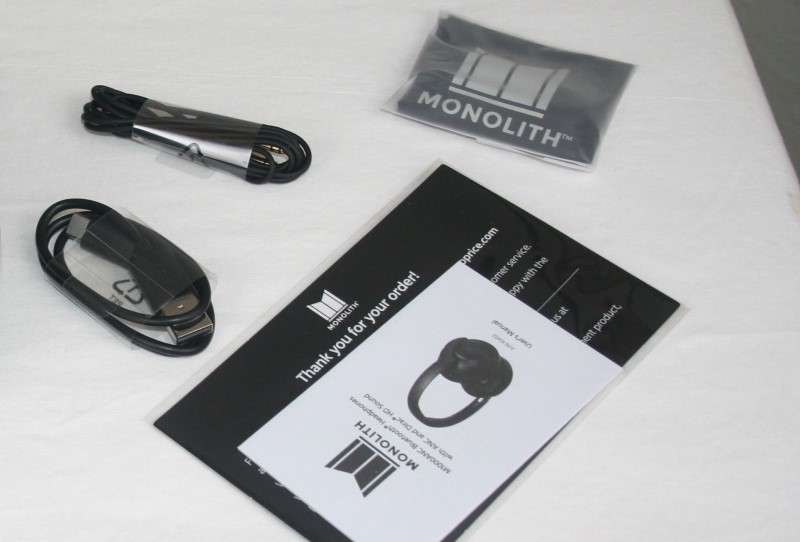
I’ve already hinted at what I thought about the sound quality in the Dirac section. I heavily preferred the “Dirac On” mode (or whatever mode pressing that button once is). With some well-recorded classical music (I’m currently on a London Philharmonic kick), they sounded really good. The low timpani notes rumbled while the high notes came through clearly. With normal music, I found the Dirac On mode just about a requirement. The boosted bass and (more importantly) treble of the Dirac Off mode made much of that music unbearable.
Battery Life and Direct Connection
As promised by Monoprice, the Monolith M1000ANC have phenomenal battery life. After a couple of hours of testing, my phone still said the headphones were at 100% charge. Even with regular use, I don’t imagine you’ll have to charge them more than once or twice a week. As they charge in around 2.5 hours, you won’t have to wait long to return to your music.
When you connect the included direct cable, the Monoprice Monolith M1000ANC Bluetooth headphones power themselves down. This disables all the ANC, Dirac, and control functions. It was near impossible to A/B the hardwired to wireless connection for sound quality but, if I had to guess, the direct connection was most like the Dirac Off mode. The fact that you can use the Monoprice Monolith M1000ANC Bluetooth headphones with a dead battery is a huge plus in my book.
Monoprice Monolith M1000ANC Bluetooth Headphones Volume
If you are shopping for headphones, you may not think to wonder about volume. You should. Wireless headphones have their own amplifiers and are limited in how much volume they can put out. The Monoprice Monolith M1000ANC Bluetooth headphones are no different. With my phone or computer, I found myself nearly at (or actually at) max volume at all times. Even at max volume, regardless of Dirac mode, they were nowhere near loud enough to damage my hearing. That’s a good thing but also…I sort of want the option to blast my headphones?
You can argue both sides. You don’t need as much volume because the Monoprice Monolith M1000ANC Bluetooth headphones have ANC and so there is not as much outside noise to drown out. My rebuttal to that is that you haven’t met my kids. I need some VOLUME, my good man! The workaround is to use them in hardwired mode. My headphone amp could easily push these to ridiculous volume.
Wrap Up
The Monoprice Monolith M1000ANC Bluetooth headphones are hard for me to really lock down as to how I feel about them. They have issues, no doubt. The volume thing really bugs me. But at $130 retail they aren’t exactly breaking the bank. Are they perfect? No. But they are (when in the right mode) very linear which is more than many headphones can say. They have a battery that just won’t quit and accurate controls. The reconnection issue is annoying but not a dealbreaker. If I was going on a long flight and wanted ANC headphones that I didn’t have to worry about plugging in, the Monoprice Monolith M1000ANC Bluetooth headphones would be my choice.


